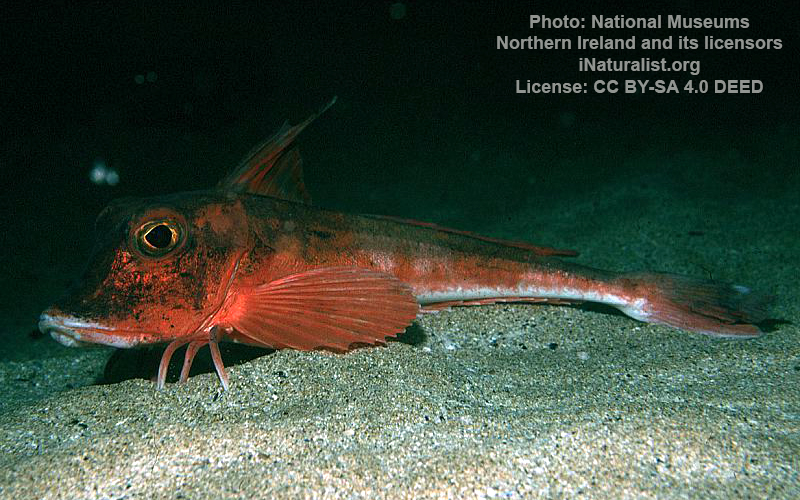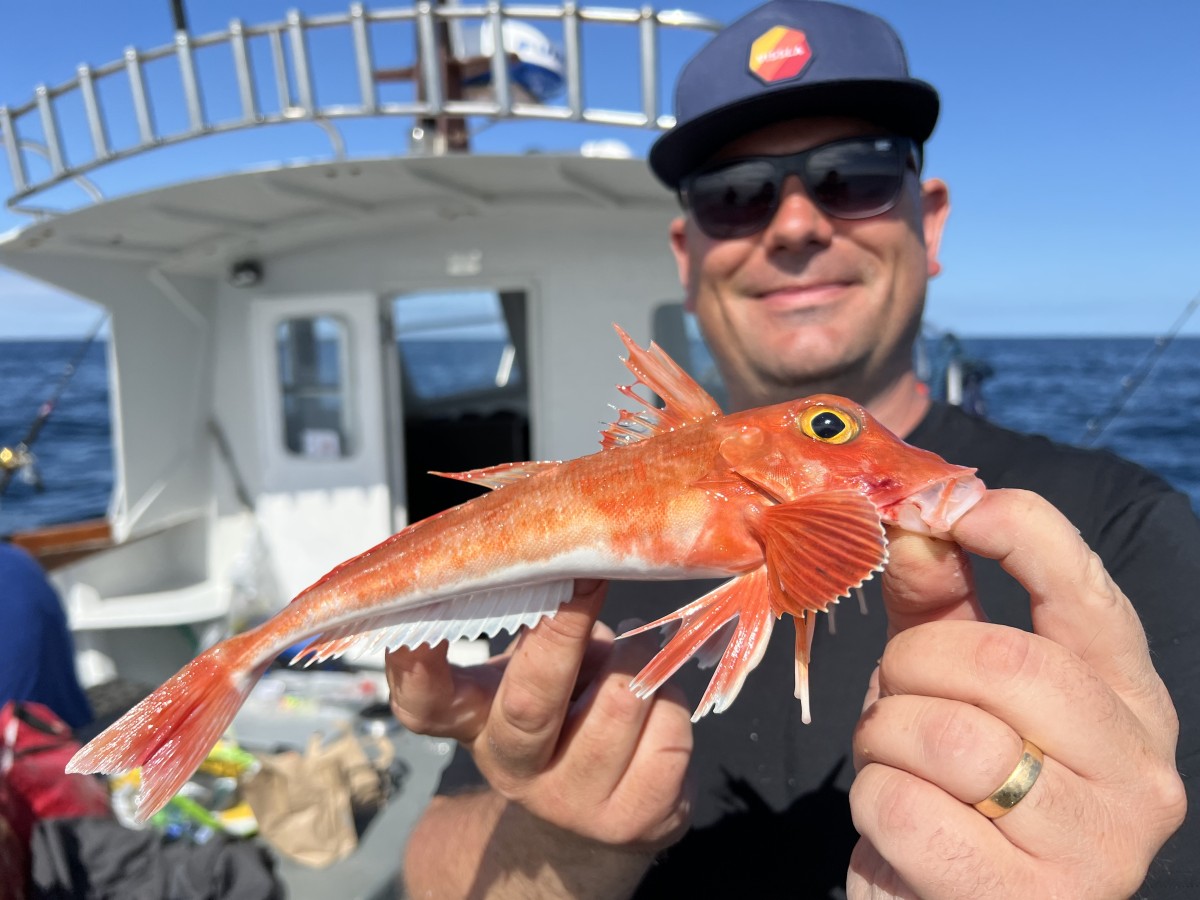Red gurnard
(Chelidonichthys cuculus)

Classification
General data
The red gurnard (Chelidonichthys cuculus), also known as the East Atlantic red gurnard or soldier, is a benthic species of ray-finned fish belonging to the family Triglidae, the gurnards and sea robins. This fish is found in the eastern Atlantic Ocean, including the Mediterranean Sea and the Black Sea.
The red gurnard has a large angular head which does not have a deep occipital groove but has a steep snout, which is elongated forward with a flattened, two lobed rostrum covered in denticles. The first dorsal fin contains 9 or 10 spines, the first of which is serrated to the front and the second spine is not elongated. the second dorsal fin has 17 or 19 soft rays while the anal fin contains between 16 and 18 soft rays. The pectoral fins have 2 or 3 enlarged, separate rays. The scales in the lateral line resemble plates having been lengthened vertically. There are no scales on the breast and the front part of the belly.
The colour is bright red on the upper body, pale on the lower body with pink pelvic fins. The anal fin is white at its base while the pectoral and dorsal fins are yellowish.
This fish has a maximum published total length of 70 cm (28 in), although a fork length of 27 cm (10.9 in) in males and 20 cm (8 in) in females is more typical.
The red gurnard is found in the eastern Atlantic Ocean from southern Scotland, although it has been recorded infrequently from Norway, south to Mauritania, including the Madeira, the Azores and the Canary Islands. It is found throughout the Mediterranean Sea and in the Black Sea. This is a demersal species which has been recorded from depths between 15 and 400 m (49 and 1,312 ft), although the usual range is 30 and 250 m (98 and 820 ft). It is typically recorded on habitats dominated by sand or gravel, although it has also been found in rocky and muddy habitats.












